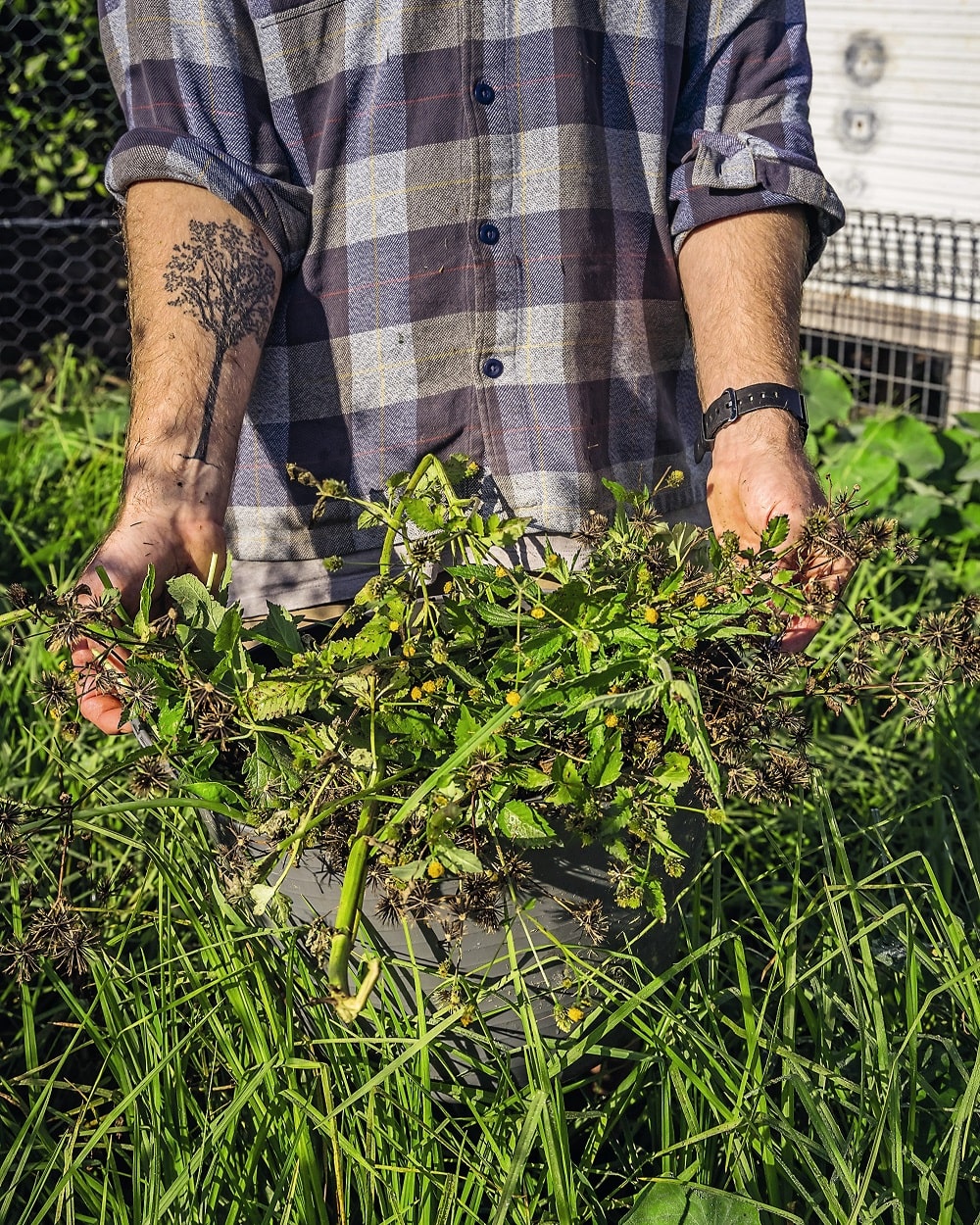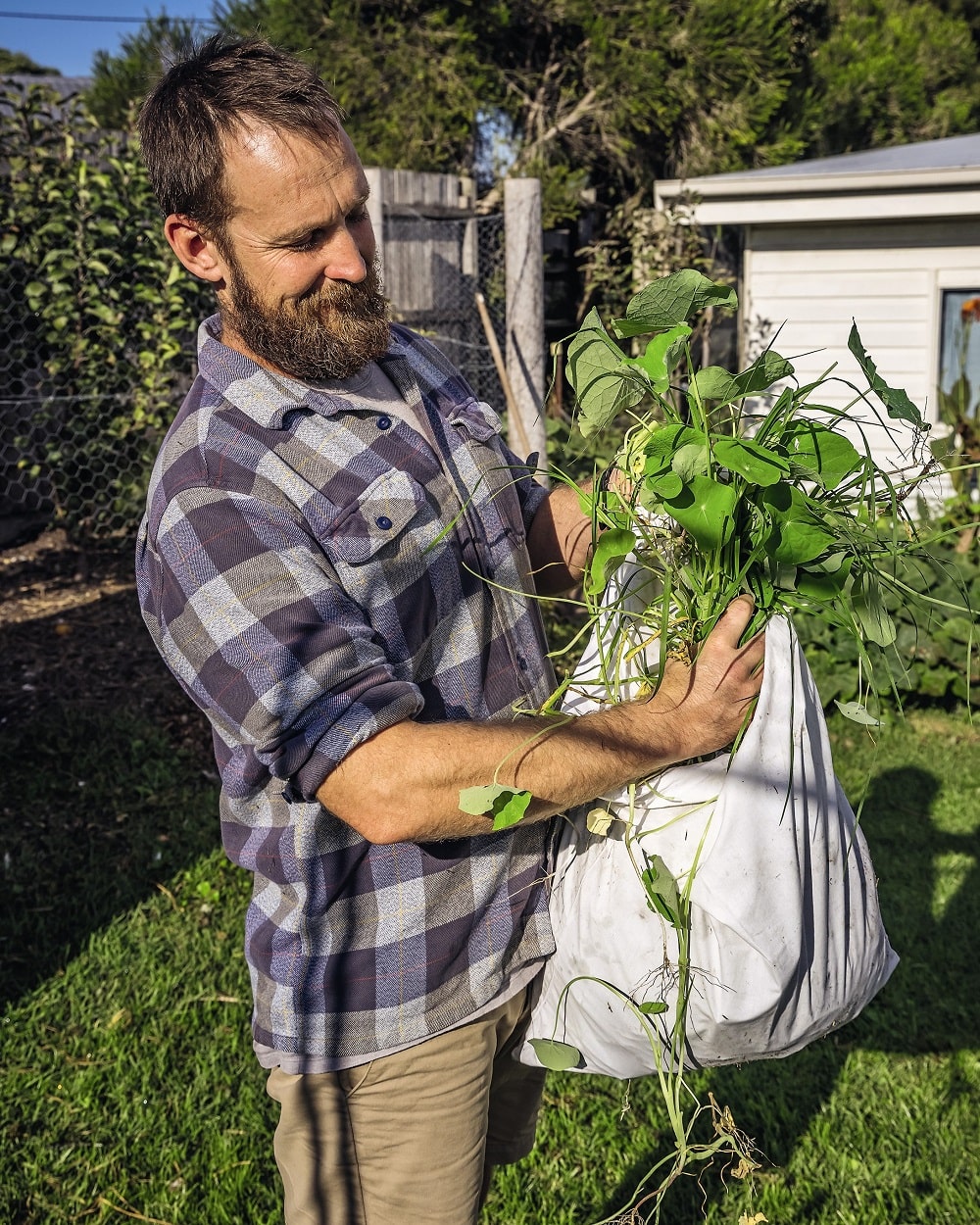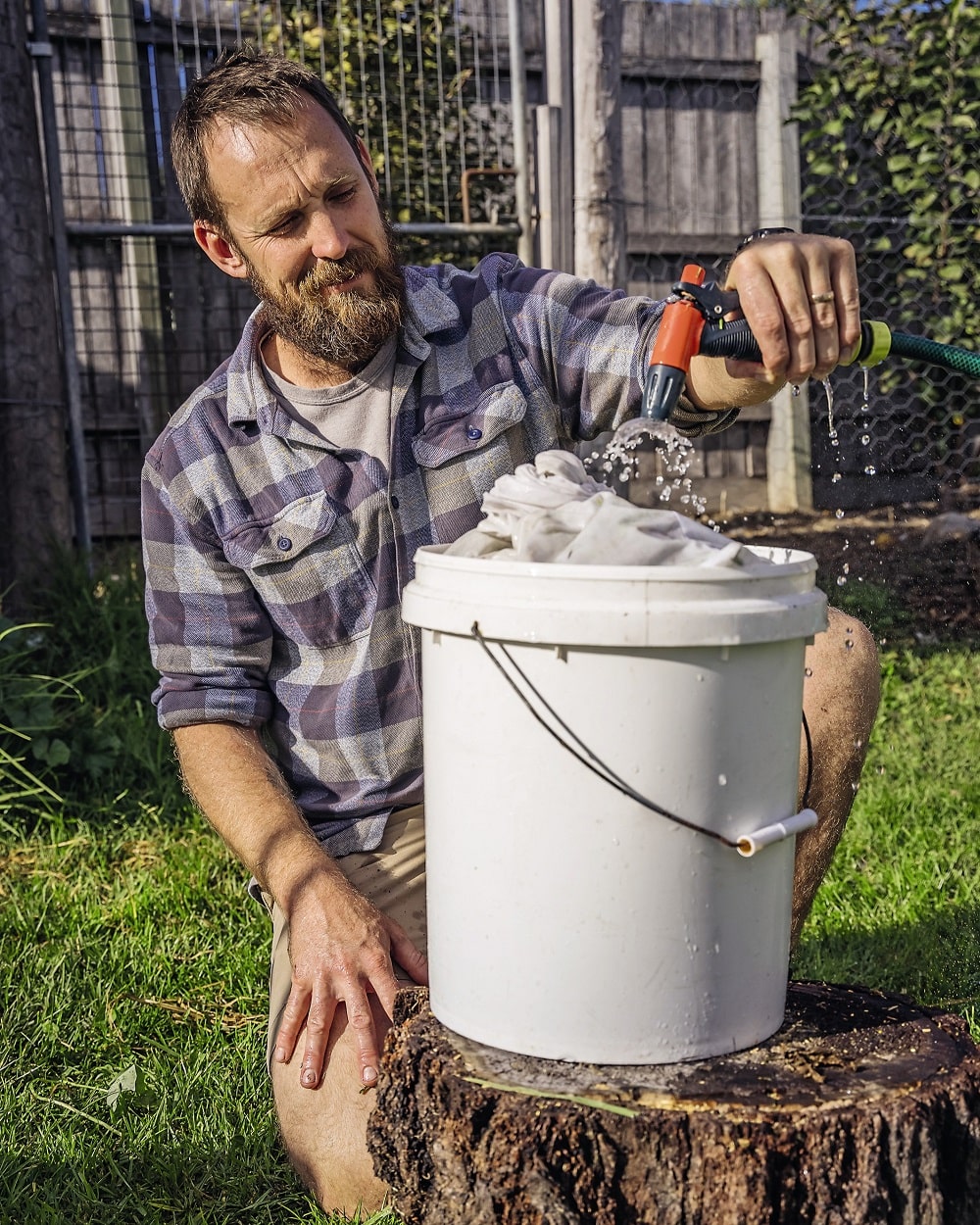Learn to grow microgreens at home, join Grow It Local +
Learn > How To
3 simple ways to make natural liquid fertilisers — & supercharge your veggie patch

Here’s a simple way to give your veggie plants a little nutritional boost through the growing season — water them with a diluted natural liquid fertiliser, which you make yourself out of weeds, animal manure or even seaweed!
The following article is an extract from Grow It Local Co-Founder Paul West’s book, Homegrown: A Year of Growing, Cooking and Eating.
Plants don’t need much to be happy. Sunlight, water and food are pretty much all that’s necessary for them to thrive and provide us with delicious homegrown produce.
As long as you have chosen a nice sunny spot in the garden and go for the odd wander with a watering can or hose, the first two are taken care of.
But providing your plants with all their nutritional needs is where things can get a little more involved.
Unless you’re lucky enough to live somewhere with abundant volcanic soils or on the alluvial flats of an ancient flood plain, in Australia, chances are you’re dealing with average-to-poor soils to grow your food.
Of course, plant nutrition starts with building up your soil through the addition of compost, worm castings and well-aged manure.
But we can also give our plants a little nutritional boost through the growing season by watering them with a diluted natural liquid fertiliser.
There are plenty of liquid fertilisers that you can buy from hardware stores and garden retailers, though in true DIY frugal gardener fashion, you can easily make your own for next-to-nothing.
Here are three simple natural fertilisers for you to try making.

What you’ll need
- An old pillow case that you are happy to sacrifice to the cause
- A 20-litre food-grade plastic bucket with a lid
- Weeds, aged manure or seaweed (or all three!
How to make weed tea liquid fertiliser
What happens to all the weeds you pull from your garden? Weeds are excellent miners of minerals from the soil, and while they can be composted or fed to the chooks, they also make excellent source material for a homemade fertiliser tea.
The next time you’re weeding:
- Shake any soil off the root balls, then stuff the pulled weeds into a pillow case.
- Once the pillow case is full, tie a knot in the top and pop it in the bucket.
- Fill the bucket with water, put the lid on and let it steep for at least two weeks.
- After that, you can use it to water the garden by diluting it one part weed tea to 10 parts water.
- Once the weeds have decomposed, you can feed them to your worms or chooks, or pop them on the compost heap.
How to make manure tea liquid fertiliser
If you live in a semi-rural area surrounded by farms, you should be able to track down some aged animal manure to use in your garden. Adding manure directly to the soil can be too rich for your tender plants, burning them or introducing weeds into your immaculate, weed-free (right?) beds.
By using the manure to make a ‘tea’, you can gain all the nutritional benefit with none of the risk.
All you need to do is:
- Stuff your pillow case ‘teabag’ with the aged manure.
- Pop it in the bucket and fill the bucket with water, then put the lid on.
- Let the tea steep for two weeks, then dilute the liquid in a ratio of one part manure tea to 15 parts water.
- After you’ve used all the liquid, simply add the leftover manure to your compost.
How to make seaweed tea liquid fertiliser
If you count yourself among the many Australians who live within a short drive to the coast, the next time you visit keep your eyes open along the sandy stretches for washed-up seaweed.
Seaweed is loaded with all kinds of micronutrients that make an excellent tonic for plants.
But before you take the trailer down to your local beach, make sure you check with the local authorities for any restrictions around collecting seaweed, as most shire councils will have some rules about where you can collect it and how much you can take.
Here’s how to make your tea:
- Break out the trusty pillow case ‘teabag’ and fill it up with seaweed. (I don’t even bother rinsing it, as the levels of salt will be negligible, but you can give it a quick rinse with fresh water if you like.)
- Pop the pillow case into your bucket, then fill it up with water and let it steep with the lid on for around a month.
- Once it’s brewed, dilute the liquid in a ratio of one part seaweed tea to 10 parts water.

Generally, it’s best to apply liquid fertilisers during the growing season, when your plants are actively taking up nutrients.
You can apply your tea directly to the soil around the base of your plants, or do a foliar feed by spraying diluted liquid fertiliser directly onto the leaves, allowing your plants to absorb nutrients through their foliage.
Incorporating homemade liquid fertilisers into your gardening routine can provide a valuable nutrient boost to your plants, leading to healthier growth, increased yields, and vibrant blooms.
And it’s cost-effective and environmentally friendly, too!
This how-to was an extract from Homegrown: A Year of Growing, Cooking and Eating by Paul West, published by Plum, RRP $44.99, photography by David Rogers.



